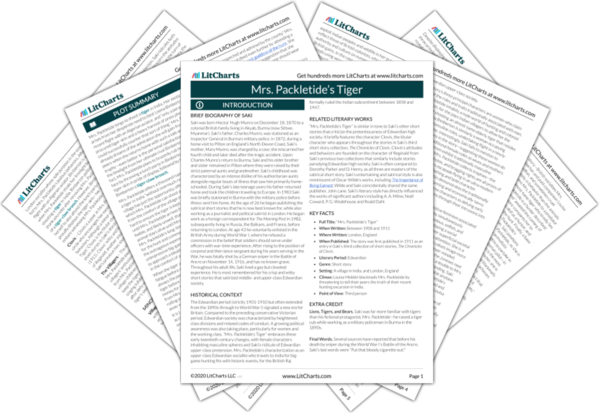The tiger is Mrs. Packletide’s ticket to winning the admiration of her fellow Edwardian peers, and she revels in promoting her exotic exploits at every opportunity. Clovis demonstrates spiteful tendencies that figure prominently in the female rivalries between Mrs. Packletide, Loona Bimberton, and Louisa Mebbin. Through Mrs. Packletide’s brazen choice to imply she has the Greek goddess Diana’s hunting prowess, and Clovis’s suggestion of a “primeval dance party” for the Edwardian elite, Saki satirizes Edwardian upper-class social propriety as absurd.
